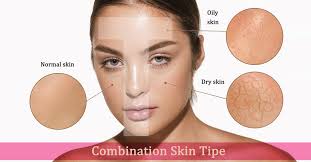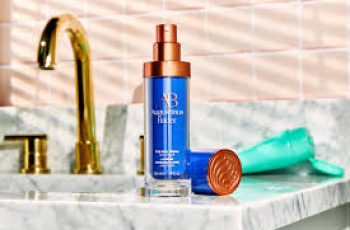
Combination Skin
There is so much confusion about the meaning of combination skin. This is because combination skin is not a true skin type. People can mean many different things when they say combination skin. For this reason, it is important to define combination skin type.
What is combination skin
What is combination skin?
Are you confused about the meaning of the term combination skin? That is because combination skin is not a real skin type. Combination skin was first described by Helena Rubenstein and is a term used by non-dermatologists to describe one of two situations:
1. Changing Skin Type
2. Oiliness in the T-Zone
2 Types of Combination Skin:
1. Combination Skin: Changing Skin Type
In this combination skin type, the skin is dry in low humidity and cold environments and oily in hot humid environments.
In this situation- the Baumann Skin Type changes seasonally – dry skin type in the winter and oily skin type in the summer.
2. Combination Skin: T-Zone Oiliness Type
In this combination skin type, the skin feels oily in the T-zone and and dry on your cheeks. This skin type should not use a heavy moisturizer. Instead choose a light moisturizer for oily skin types.
Why do your cheeks feel dry when your t- zone is oily?
Everyone’s face has more oil glands in the T- zone than on the sides of the face. If you have a normal amount or an increased amount of sebum production you can feel oily in the mid face. The areas that do not have oil glands may have an impaired skin barrier if you feel dry. The sebum can compensate for the impaired barrier in the t-zone area by providing occlusion, but the cheek area that is lacking in sebum experiences increased water evaporation from the impaired barrier. This is why you still need a moisturizer when your t-zone is oily but other areas are dry.
Oily vs Dry skin
Normal Oily Baumann Skin Type vs Dry Baumann Skin Type
When the t-zone sebaceous glands make enough oil to coat the skin and repair the skin barrier- the skin is categorized as a Normal Oily Baumann Skin Type.
When the oil glands in the t- zone do not make enough oil to coat the cheeks- this is considered a Dry Baumann Skin Type.
So- if you have an oily t- zone- do not assume you are a combination or oily skin type. You might still have dry skin and an oily t- zone.
It all has to do with the status of your skin barrier.
Confusing- I know!
You do not need to worry about the definition of combination skin or if you have oily combination skin or dry combination skin because our skin type test will correctly identify your skin type.
Our skin type quiz will assign you to an oily or dry skin type so that you will get the best skin care recommendations for your skin.
Take the Quiz
What is Combination Skin?
As you saw above, there are two main combination skin types. I am going to explain these combination skin types again in a different way to see if it makes more sense to you.
The definitions of these skin types are based on 2 measurable parameters:
Sebum secretion
Skin barrier integrity
Your sebum secretion rates and skin barrier strength can change seasonally. This leads to a changing skin type. The T-zone area can make an increased amount of sebum compared to your cheeks. If your skin barrier is impaired, the cheeks can feel dry while the t-zone feels oily. But in this situation, a heavy barrier repair moisturizer is too greasy for your t-zone so you need to choose a moisturizer for oily skin.
To reiterate- here are the 2 types of combination skin:
1. Skin Types that change from a dry skin type in dry climates to an oily skin type in humid climates
In the Baumann Skin typing System- this type of combination skin is considered a dry skin type in the winter and an oily skin type in the summer. This is also referred to as a Changing Skin Type.
oily skin in summer, dry skin in winter
2. Skin types that have an oily T zone and dry cheeks.
In the Baumann Skin Typing System- this may be called a dry skin type or a normal oily skin type.
Dry skin types have an oily t zone but the t- zone area does not make enough oil to compensate for an impaired skin barrier. Dry skin types, even those with an oily T- zone, need a barrier repair moisturizer.
Normal oily skin types make just enough oil in the t- zone to help hydrate skin. Normal oily skin types do well with a light moisturizer.
undefined
Products For Combination Skin
The best products for combination skin types depend upon which combination skin type you have. The definition of combination skin is based on the skin’s ability to make oil (sebum) and the skin hydration level that is determined by the skin’s ability to hold onto water. There are other factors to considering when choosing a skincare routine for combination skin such as:
Is the skin sensitive?
Is the skin tone even?
Do I have risk factors for skin aging that need to be addressed?
Each of these skin concerns needs to be addressed in a combination skincare routine. In general, products for combination skin are adequate for every skin type but not awesome for any skin type. In other words, it is better to have skincare products designed for your Baumann Skin Type than for the vague undefined category of combination skin because the term “Combination skin” is not a specific scientific term.
best moisturizers for combination skin
Products for the Changing Combination Skin Type
If you have a changing combination skin type, use a skincare routine for dry skin in the winter and oily skin in the summer.
Products for the T-Zone Combination Skin Type
If you have the T-zone combination skin type, take the quiz to determine if you should use skincare products for a dry skin type or an oily skin type.
best products for combination skin
The best way to choose products for combination skin types is to retake the skin type quiz when the season change and update your skincare routine seasonally.
best moisturizer for combination skin
The moisturizer to choose depends upon which type of combination skin you have, what the weather is and what other skin issues you have.
Best Skin Care Products For Combination Skin
Rather than using skincare products for combination skin, instead choose products seasonally.
You will likely require products for dry skin in the winter and oily skin in the summer.
However, don’t waste time and money and risk your skin health by guessing. The skin type quiz was developed to help determine the best skincare routine for your combination skin type.


